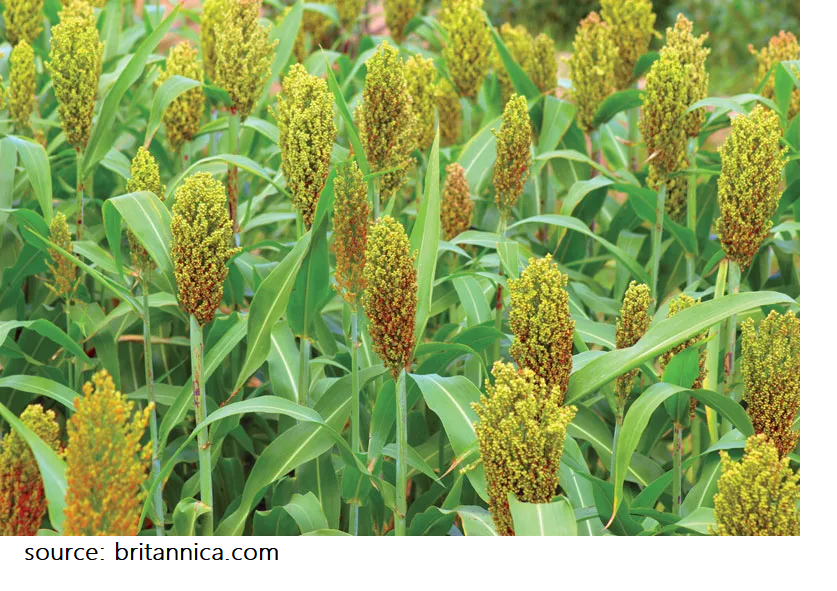Sorghum Millet
Sorghum, scientifically known as Sorghum bicolor L., belongs to the Gramineae family and is a carbohydrate-rich crop. It holds a significant position as one of the primary food sources for millions of people living in semi-arid regions. Often referred to as “The KING OF MILLETS,” sorghum’s main component is starch, which is digested more slowly compared to other cereals. It also has a lower digestibility of proteins and fats. The development of non-communicable diseases is greatly influenced by oxidative stress and the excessive production of free radicals. Sorghum-derived phenolic chemicals control the expression of phase II enzymes, which serve as the body’s natural defense against oxidative stress. These chemicals convert highly reactive electrophilic species (RES) into harmless and excretable metabolites.

Among the various millet species, pearl millet (Pennisetum glaucum, P. typhoides, Pyridium, and P. americanum) is the most extensively cultivated. This summer cereal grass is characterized by its large stems, leaves, and heads. Pearl millet plays a vital role in farming and food security in regions of Africa and Asia that have limited capabilities to cultivate other crops. It utilizes moisture more efficiently compared to other millets like sorghum or maize. The grain is supported by condensed panicles (spiked) that can measure between 10 and 150 cm in length. In conditions of heat and drought, pearl millet exhibits the highest yield potential among all millets.
Pearl millet offers various benefits, including its potential contribution to weight loss due to its high fiber content. It provides a feeling of satiety as it takes longer to pass through the stomach to the intestine. Additionally, the risk of gallstone occurrence is low due to its high fiber content. Pearl millet is also rich in phosphorus and calcium, which are crucial for achieving peak bone density.
